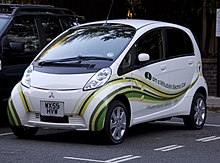Renewable energy could fully power a large electric grid 99.9 percent of the time by 2030 at costs comparable to today's electricity expenses, according to new research by the University of Delaware and Delaware Technical Community College.
A well-designed combination of wind power, solar power and storage in batteries and fuel cells would nearly always exceed electricity demands while keeping costs low, the scientists found.
"These results break the conventional wisdom that renewable energy is too unreliable and expensive," said co-author Willett Kempton, professor in the School of Marine Science and Policy in UD's College of Earth, Ocean, and Environment. "The key is to get the right combination of electricity sources and storage -- which we did by an exhaustive search -- and to calculate costs correctly."
A well-designed combination of wind power, solar power and storage in batteries and fuel cells would nearly always exceed electricity demands while keeping costs low, the scientists found.
"These results break the conventional wisdom that renewable energy is too unreliable and expensive," said co-author Willett Kempton, professor in the School of Marine Science and Policy in UD's College of Earth, Ocean, and Environment. "The key is to get the right combination of electricity sources and storage -- which we did by an exhaustive search -- and to calculate costs correctly."







































